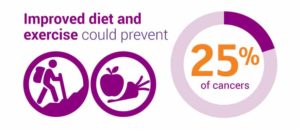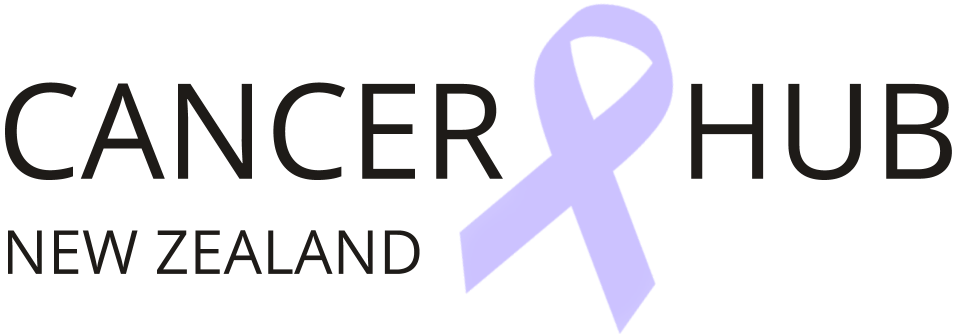Lifestyle is arguably the biggest factor that promotes the onset of cancer for most people
The implication of this is, if careful attention is paid to adopting a lifestyle free of cancer-causing environmental factors, or improving cancer-causing environmental factors in one’s lifestyle early enough, then this will have a positive effect and lower the odds of developing cancer. Many research studies and review articles support this statement.
It is clear that improving lifestyle factors can immediately impact on how the environment plays a role in promoting cancer in a person. Undoubtedly, a number of factors in the environment cause cancer, such as, for example, tobacco smoke. Other such factors include excessive sun exposure, components in the diet, or components left out of the diet, chemicals used in industry, asbestos used in building, and so on.
Risk calculators are useful tools for people to quicly and easily determine their relative risk of developing certain types of cancer. For some people, a combination of their own body’s physical make-up, together with adverse environmental factors make them at higher risk of developing certain types of cancer.
Melanoma is an aggressive, deadly cancer type strongly influenced by environmental and lifestyle factors. Exposure to a high ultra-violet (UV) index (eg a UV index of 12), which often occurs at around mid day in NZ for as little as 12 minutes, or exposure for slightly longer intervals at a lower UV index at other times of the day (eg a UV index of 6 for 24 minutes), causes sunburn, particularly in fair-skinned individuals. Sunburn is not solely responsible for melanoma, as length and intensity of exposure to UV radiation plays an important role in causing melanoma. Sunbeds (eg tanning beds or tanning booths) are designed to tan rather than cause sunburn, but are lethal due to their UV radiation, and ought to be banned in NZ, due to their indisputable role in causing melanoma. Under no circumstances are sunbeds an acceptable lifestyle choice – sunbeds cause melanoma deaths, just like tobacco is known to cause lung cancer.
The risk of developing melanoma is known to vary from person to person according to a number of different risk factors. You can ask your doctor (your GP or your dermatologist) to determine whether you are at low, moderate, high or very high risk of developing melanoma by accessing a NZ-specialized melanoma risk calculator by clicking here. Your doctor will have the necessary login access. This tool is designed for New Zealanders who have not previously had, or don’t currently have melanoma, are aged 20 years and older, who have fair, medium or olive skin, and who are not affected by a predisposing condition for melanoma.
Additional (non-NZ) melanoma assessment tools are available in the following;
Melanoma Risk Assessment Tool – National Cancer Institute. For clinicians, this tool considers factors such as geographic location, gender, complexion, and more to help medical professionals assess a patient’s risk of developing melanoma.
Your Disease Risk Melanoma Calculator – This risk calculator from Washington University’s School of Medicine Siteman Cancer Center estimates your risk of melanoma and provides advice on how to minimize that risk.
Skin Cancer Risk Calculator – This easy to use calculator focuses primarily on sun exposure to determine your risk level.
Melanoma Calculator – This calculator from a skin and mole clinic asks users to assess their moles, freckles, and skin history.
A kiwi online check tool on prostate cancer is available here.
A NZ bowel cancer risk calculator is available here. A document on identifying New Zealanders at increased risk of colorectal (bowel) cancer is available here.
A detailed breast cancer risk assessment tool is available here.
A list of other cancer risk assessment tools is available here, including lung cancer, prostate cancer, breast cancer, colorectal cancer, kidney cancer, leukaemia, thyroid cancer and non-Hodgkins lymphoma risk calculators. In particular, it is worth noting that many types of cancer can be prevented through healthy behaviors and early screening.
 Image taken from Lifestyle Cancer Risks, Creative Commons Attribution 4.0 International Licence
Image taken from Lifestyle Cancer Risks, Creative Commons Attribution 4.0 International Licence
A quote taken from the book 21 Lessons for the 21st Century – by Yuval Noah Harari. Penguin Random House UK publishers, 2018, p49, line 21. – “It is one thing to continue smoking despite general statistics that connect smoking with lung cancer. It is a very different thing to continue smoking despite a concrete warning (that you are at increased risk).” (text in brackets modified from the original) .
